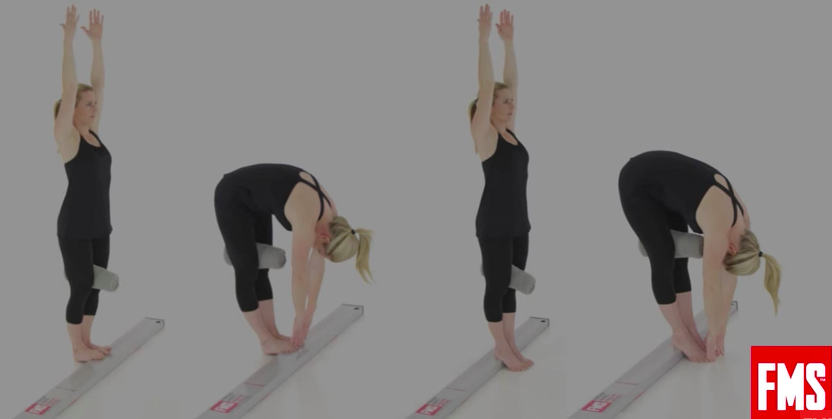Whiteboard Talks: Understanding the ASLR
Posted by FMS
“My hamstrings are sooo tight. I’ll never be able to touch my toes.”
“I haven’t been able to touch my toes in years. I have bad hips.”
As health and fitness professionals, we hear these comments all the time. Our athletes and clients haven’t touched their toes in years and immediately assume it’s due to poor tissue quality or muscle length.
It’s a classic example of focusing on parts instead of patterns, hardware instead of software.
The reason many people can’t touch their toes has nothing to do with the flexibility of their hamstring and everything to do with the sequence of their movement toward the ground. Sound like a simple fix? It really is.
Often times when lecturing for FMS or on the Perform Better circuit, Gray and Lee will bring someone on stage who can’t touch their toes and teach them to do so in a matter of minutes (check out the video above at the 58:38 mark to see Gray do this at the end of his talk at Google). We call this the Toe Touch Progression.
There is no stretching or soft tissue mobilization involved. The goal is to demonstrate how movement can change much quicker than we think.
Here's how the Toe Touch Progression works:

In the video above, Gray began the intervention at 1:01:00. His volunteers were touching their toes less than three minutes later. How were we able to correct this so quickly? Because we attacked a software problem, not a hardware problem.
If all you're thinking of is anatomy when you encounter dysfunction, there's a good chance you're overlooking the root cause.
We can see issues with toe touch patterns in many populations, from sedentary people to extremely active athletes. It indicates that they are more dependent on their legs for stabilization than their core. We don’t want that.
When you take away stiffness, you have an oportunty to inject a new pattern. Stiffness is like training wheels.
When you break through a pattern you have a small window of opportunity. Take advantage of it. If we reinsert that deadlifting pattern on a clean toe touch you’ll quickly realize you don’t need to do that toe touch progression as much. The need will diminish because now you’re causing a reset.
We don’t want people doing corrective strategies for a long period of time. The minute we breakthrough, we try to upload new information that requires technique, mobility, stability, dynamic stabilization, appropriate breathing, etc.
The toe touch progression works because it challenge a pattern. Both sedentary people and highly trained athletes often use their global muscles or prime movers as stabilizers. Local muscles/stabilizers aren’t doing their job. When the stabilizers aren't working appropriately, we try to use our lats, gluts and hamstrings to hold us up. It’s not about stretching or strengthening, it’s about changing the pattern.
Posted by FMS
Posted by Gray Cook
This was such a powerful lesson for me and the way I approach training my clients. I'm a personal Trainer so I have to be creative with the way I help people move better and still get buy in at the same time. When I take someone who can't touch their toes and is convinced that it will never happen and after literally 3 mins of correctives they can get down with ease, the look on their face is priceless. and the buy in is even better. I love that you guys are always taking things that one extra step. moving that client on to the deadlift for example after achieving the toe touch is a great point that is easily over looked. the toe touch is just a check point on the journey but not the end destination.
Thank you FMS team for breaking things down and stripping away all the extra stuff that gets in the way of reaching healthy movement.
Awesome!! thanks once again for great information!
Wow, I'm definitely going to be using this from now on! Touching toes for some of my marital arts students has always been a problem. This will help a ton. A very nice secret Mr. Cook. I can't speak highly enough of
functional fitness training. I think it's a paradigm shift that can help a lot of people. I look forward to becoming certified soon.
Brodie
Amazing..
Great work. Thanks for sharing this information on toe touching exercise with us.
Fantastic and really put things in perspective. Thank you!